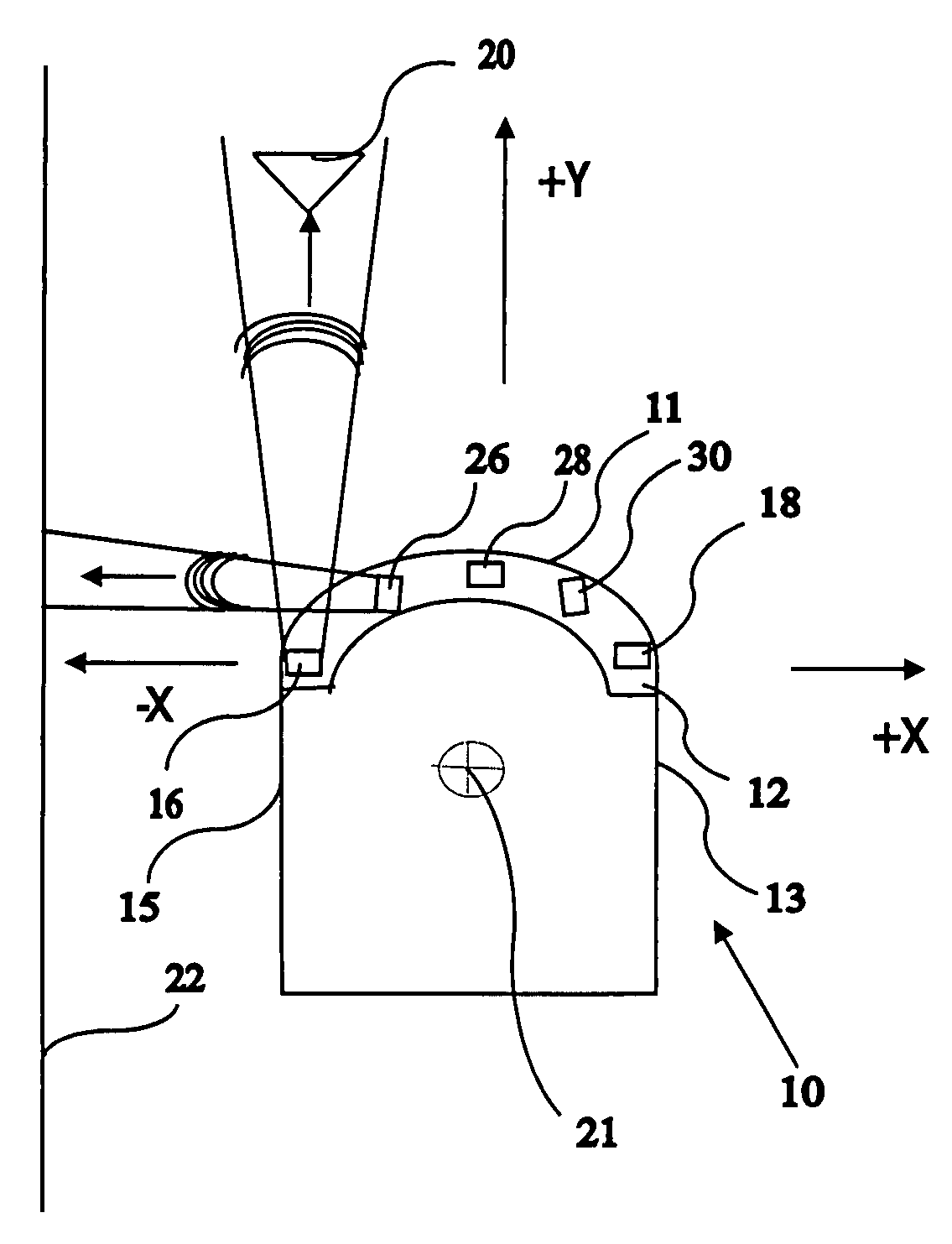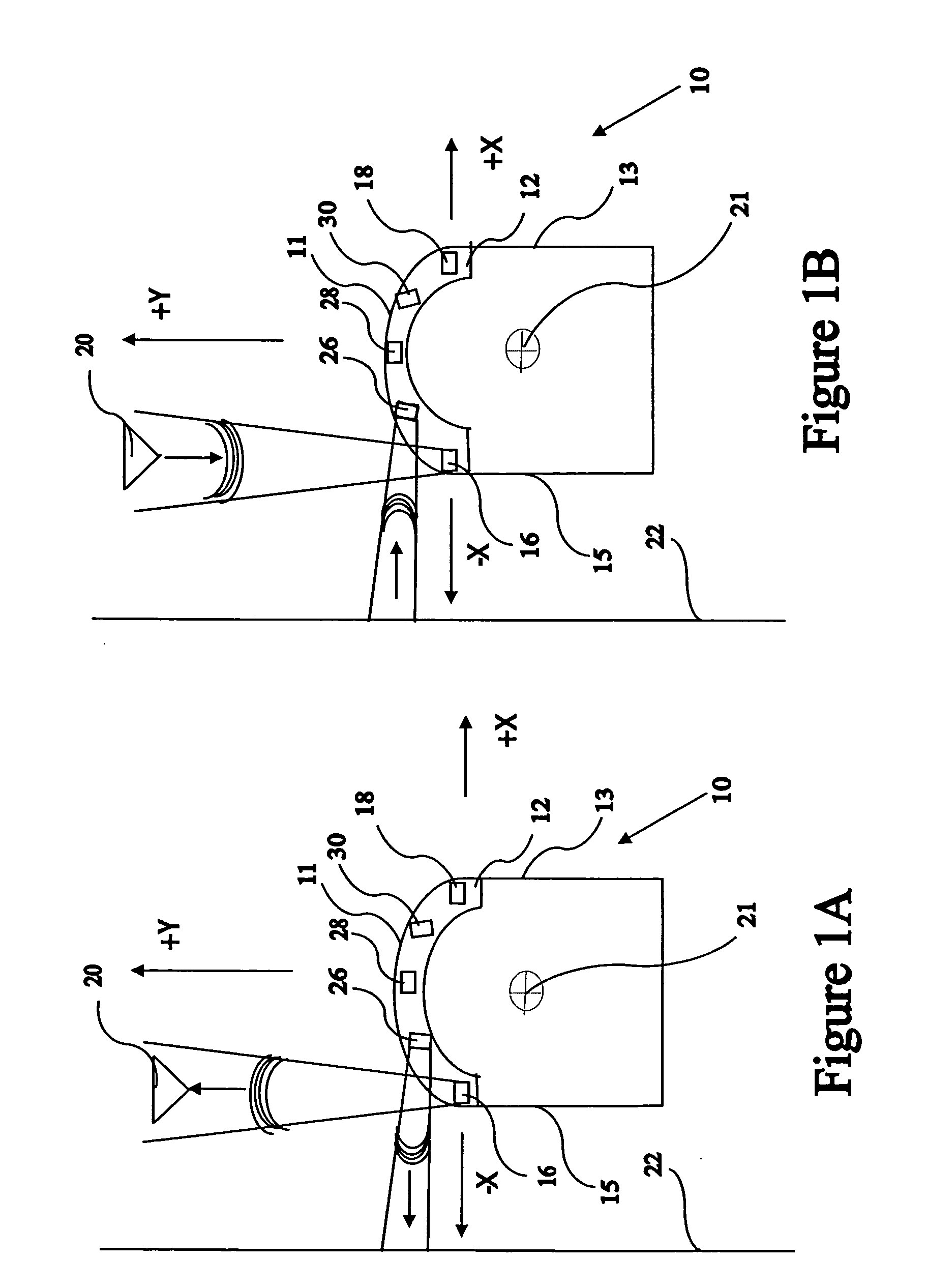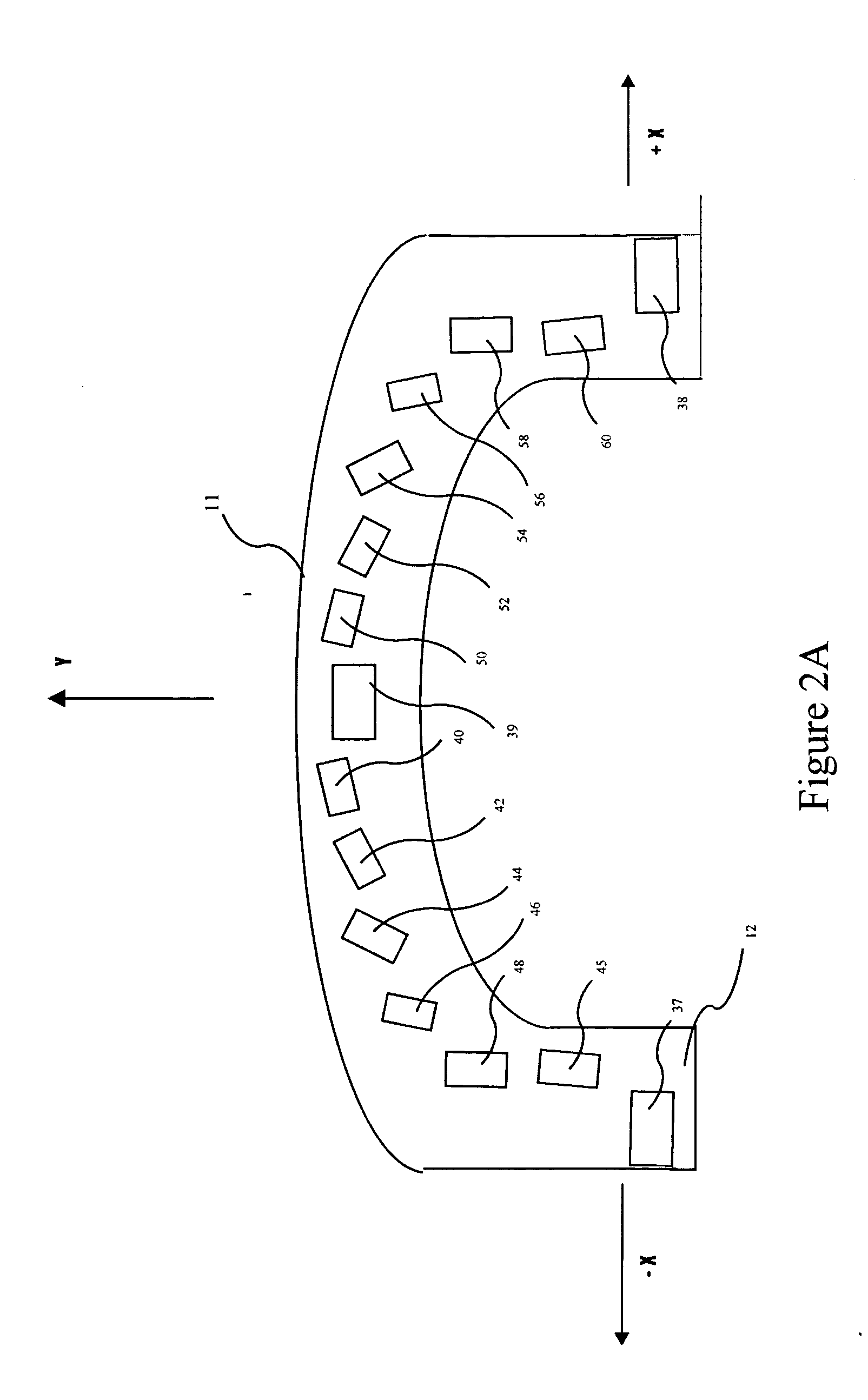Mobile vehicle sensor array
a sensor array and mobile technology, applied in the direction of instruments, process and machine control, braking systems, etc., can solve the problems of difficult to detect objects, prior art cleaning machines have limited vision, and cleaning machines have problems detecting objects directly ahead of cleaning machines, so as to improve the detection accuracy, improve the detection of objects, and increase the confidence level
- Summary
- Abstract
- Description
- Claims
- Application Information
AI Technical Summary
Benefits of technology
Problems solved by technology
Method used
Image
Examples
Embodiment Construction
[0023] The present invention provides an improved sensor array for a mobile vehicle. Accordingly, the primary objective is to provide an improved sensor array so that the mobile vehicle detects more accurately the location of objects ahead of the mobile vehicle. In particular, the primary objective of the present invention is to provide a mobile vehicle traveling in a forward direction having a front, a first side, a second side and a vertical axis of rotation with improved detection ability of objects ahead of the mobile vehicle.
[0024]FIG. 1 is a sensor array mounted on a mobile vehicle. A mobile vehicle 10 comprises a sensor array 12. In one preferred embodiment of the present invention, mobile vehicle 10 is a unmanned cleaning machine for floors. In the alternative, the mobile vehicle may be any automatic or semiautomatic machine that will follow a programmed path with a minimum or no human supervision. In this preferred embodiment, mobile vehicle 10 is traveling in the forward ...
PUM
 Login to View More
Login to View More Abstract
Description
Claims
Application Information
 Login to View More
Login to View More - R&D
- Intellectual Property
- Life Sciences
- Materials
- Tech Scout
- Unparalleled Data Quality
- Higher Quality Content
- 60% Fewer Hallucinations
Browse by: Latest US Patents, China's latest patents, Technical Efficacy Thesaurus, Application Domain, Technology Topic, Popular Technical Reports.
© 2025 PatSnap. All rights reserved.Legal|Privacy policy|Modern Slavery Act Transparency Statement|Sitemap|About US| Contact US: help@patsnap.com



